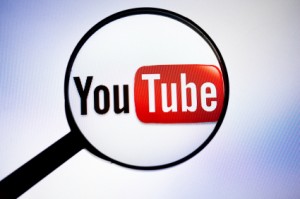How to Create Great Advertising with Storytelling
 Top 10 lists are everywhere this time of year. One of the most interesting lists for marketers is the Top 10 Most Viewed Ads on YouTube, as reported on Mashable.com.
Top 10 lists are everywhere this time of year. One of the most interesting lists for marketers is the Top 10 Most Viewed Ads on YouTube, as reported on Mashable.com.
Think about this list for a moment: These are TV spots people chose to watch online, by the millions. That’s an advertiser’s dream.
But what makes these ads so popular? Why did the Darth Vader Volkswagen spot get over 45 million YouTube views? Why did 25 million people view the Royal Wedding dance ad for T-Mobile?
It’s not crazy gimmicks or over-the-top production techniques, though some of the ads on the YouTube Top 10 list have spectacular visual effects.
I think it’s about storytelling. The most watched ads of 2011 engage viewers in a compelling story.
Here’s why storytelling is such an effective advertising technique and how to tell stories in your smart marketing strategy.
Why Stories Work in Marketing
Storytelling is fundamental to every culture. Stories work in marketing because everyone understands what a story is about. When the story is highly relevant to the needs and interests of the audience, it’s a powerful and persuasive way to convey information.
Stories have a plot, characters, and a narrative point of view. The mostly highly viewed YouTube ads – the Volkswagen and T-Mobile spots, Jennifer Aniston creating a video for Smartwater, or Chrysler’s “Imported from Detroit” campaign – combine these elements brilliantly.
7 Characteristics of Effective Advertising Storytelling
As a marketing strategist, I believe there are seven characteristics of a great advertising story:
- It’s engaging: The viewer is immediately drawn into the scenario. Something interesting is happening and you want to know what it is.
- It’s emotional: The best advertising stories make you feel something: Empathy, humor, joy, tension, excitement.
- It’s memorable: You get it and can’t forget it.
- It’s easy to retell: You can describe the basic scenario in one sentence.
- It has a plot: There’s a beginning, middle, and end.
- There’s an element of suspense: You have to stick with the ad to see how the story will turn out.
- Most important, the product plays a pivotal role: The product is woven into the story so well that the story couldn’t be told with it.
Lessons for Your Smart Marketing Strategy
Storytelling can be a smart marketing tactic for almost any marketer and great stories don’t have to be told just on TV.
One example is the excellent Avis marketing campaign on the front page of the Marketplace section of The Wall Street Journal. Avis uses real letters from grateful customers to tell stories about the company’s commitment to customer service.
To create dynamic marketing stories like these, I advise clients of my marketing consulting firm to think about the following:
- How are your products or services used? What stories might your customers tell? Plot out the scenarios and explore how to make these scenarios interesting to prospects.
- Who are your customers? What type of character is your customer? Use real-life case studies to showcase customers as themselves or create similar characters prospects can relate to.
- What emotions do people feel when they use your products or services? Do your customers feel confident, safe, happy, relieved, excited, satisfied, proud? Capture these emotions in the stories you tell.
- What is your product’s role? How does your product enable your customers to achieve success? Build your stories around the benefits of what you sell.
A final tip: Don’t make the mistake of telling such a great story that the product gets lost in the narrative. See my prior post about the Kevin Bacon ad for Logitech.
What stories do you think made the most compelling advertising campaigns?





Kristina Austin
Great info. Thank you for sharing.
jeangianfagna
Thanks, Kris. The Gathering Place has wonderful stories to tell and you do a great job of telling those stories!
jeangianfagna
Advertising Age reports today that 2012 Super Bowl advertisers plan to focus on storytelling. Watch for a future blog post about how well they did!
http://adage.com/article/special-report-super-bowl/super-bowl-return-days-spectacular-1984-ad/231849/?utm_source=mediaworks&utm_medium=newsletter&utm_campaign=adage
Salvia Monterrey
muchas gracias por la información y felicidades.
jeangianfagna
You’re welcome, Salvia. Thanks for commenting.
Pingback:How to Create Great Advertising with Storytelling | Smart Marketing Strategy | Developpement d'affaires - Pierre André Fontaine
jeangianfagna
Thanks, Pierre, for your comment and for sharing my blog.
Pingback:Short, Simple & Sweet: Creating the Magic of Storytelling « Collaborative Services
jeangianfagna
Thanks very much for quoting my blog. Your points are excellent as well.
Mark
Thanks for referencing real campaigns. I like storytelling because it switches the mind into problem solving mode, whereas bullet points cause people to pause and think if it’s true or not. Here’s an article I wrote that touches on how I used one story to sell the services of an advertising agency. http://blogs.imediaconnection.com/blog/2012/09/13/the-greatest-story-ever-sold/?imcid=nav
jeangianfagna
Thanks, Mark, for reading my blog and sharing your observations about the impact of storytelling. Thanks also for sharing your post.
Pingback:Story Telling In Graphic Design | olivia ripley taylor
Pingback:How to Create Great Advertising with Storytelli...